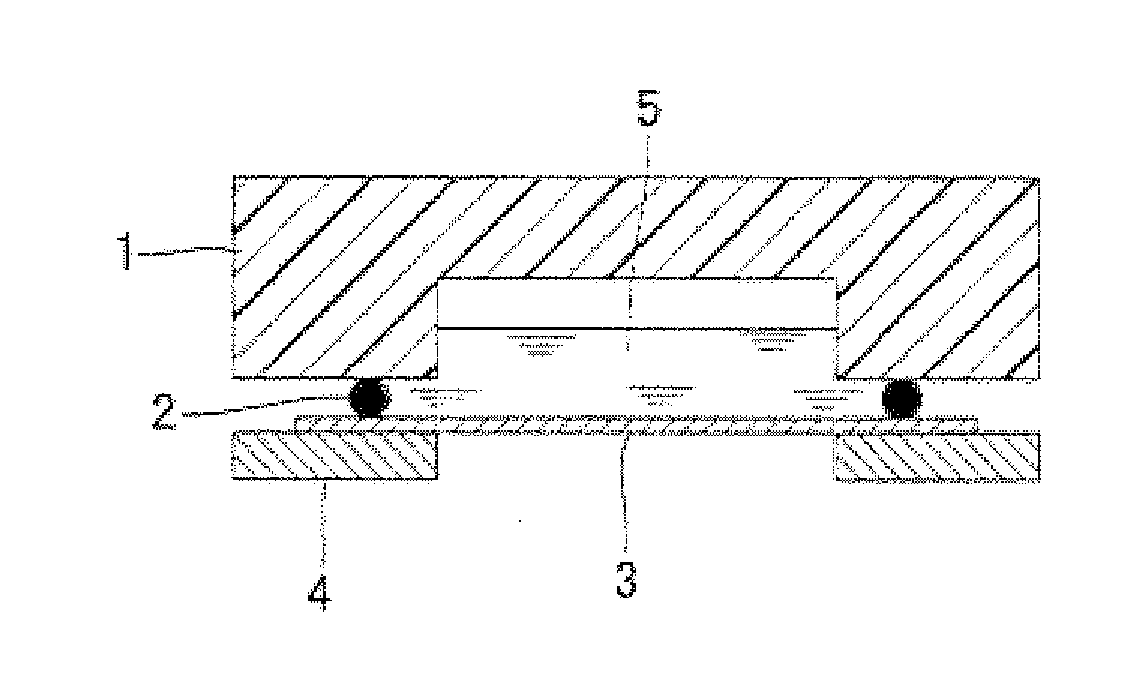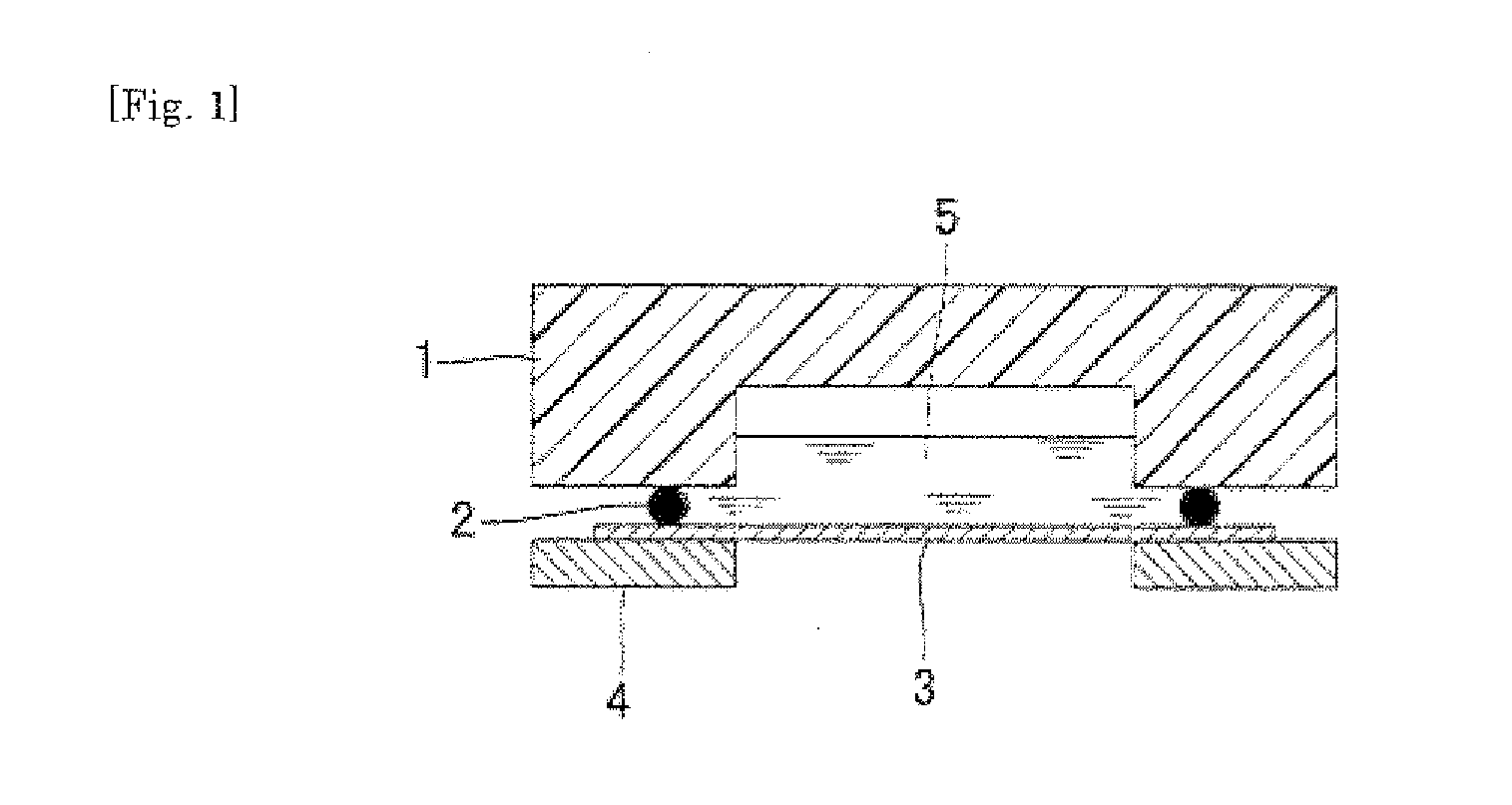Conductive film, current collector using same, battery and bipolar battery
- Summary
- Abstract
- Description
- Claims
- Application Information
AI Technical Summary
Benefits of technology
Problems solved by technology
Method used
Image
Examples
synthesis example 1
[0264]As starting materials, 3,3′,4,4′-biphenyltetracarboxylic dianhydride (BPDA) as a tetracarboxylic dianhydride and 4,4′-oxydianiline (ODA) as a diamine compound were used, and N,N-dimethylacetamide (DMAc) was used as a solvent.
[0265]Into a glass flask having a volume of 2,000 ml, 735 g of DMAc and 54.66 g of ODA were charged and the mixture was stirred to dissolve ODA. Then, 78.73 g of BPDA was added and the mixture was further stirred. Separately, a slurry containing 30 g of DMAc and 1.61 g of BPDA was prepared. The slurry was added to the reaction solution while the viscosity was carefully observed. The addition and stirring were stopped when the viscosity reached 200 Pa·s, yielding a polyamic acid solution having a resin solid content concentration of 15% by weight.
[0266]The obtained polyamic acid solution, Ketjenblack (ECP600JD, manufactured by Lion Corporation), and N,N-dimethylformamide (hereinafter called. DMF) were mixed in a weight ratio of 10:1:20 and the mixture was s...
example 1
[0269]A mixture of an epoxy resin (trade name: jER828, manufactured by Mitsubishi Chemical Corporation, epoxy equivalent: 184 to 194 g / eq), Ketjenblack (trade name: ECP600JD, manufactured by Lion Corporation), and xylene in a weight ratio of 29.2:3.3:67.4 was subjected to dispersion treatment with a ball mill to yield a carbon dispersion liquid. The dispersion employed zirconia balls having a diameter of 5 mm and required treatment at a rotation speed of 500 rpm for 30 minutes.
[0270]The carbon dispersion liquid and triethylenetetramine (TETA) were mixed in a weight ratio of 10:0.45 to yield a homogeneous coating liquid.
[0271]The obtained coating liquid was applied onto a copper foil so as to give a final thickness of 15 μm and the coating was heated and cured at 150° C. for 3 hours. Subsequently, the film was immersed in an etching solution for metal foil (trade name: H-200A, manufactured by Sunhayato Corp.) and the copper foil was dissolved and removed over 3 hours to yield a condu...
example 2
[0273]A mixture of an epoxy resin (trade name: jER828, manufactured by Mitsubishi Chemical Corporation, epoxy equivalent: 184 to 194 g / eq), Ketjenblack (trade name: ECP600JD, manufactured by Lion Corporation), and xylene in a weight ratio of 29.2:3, 3:67.4 was subjected to dispersion treatment with a ball mill to yield a carbon dispersion liquid. The dispersion employed zirconia balls having a diameter of 5 mm and required treatment at a rotation speed of 500 rpm for 30 minutes.
[0274]The carbon dispersion liquid and triethylenetetramine (TETA) were mixed in a weight ratio of 10:0.45 to yield a homogeneous coating liquid.
[0275]The obtained coating liquid was applied onto a face of the single layer conductive film as the layer 2 obtained in Synthesis Example 1 so as to give a final thickness of 15 μm and the coating was heated and cured at 150° C. for 3 hours to yield a multilayer conductive film (40 μm thick).
[0276]The obtained multilayer conductive film was subjected to measurement ...
PUM
 Login to View More
Login to View More Abstract
Description
Claims
Application Information
 Login to View More
Login to View More - R&D
- Intellectual Property
- Life Sciences
- Materials
- Tech Scout
- Unparalleled Data Quality
- Higher Quality Content
- 60% Fewer Hallucinations
Browse by: Latest US Patents, China's latest patents, Technical Efficacy Thesaurus, Application Domain, Technology Topic, Popular Technical Reports.
© 2025 PatSnap. All rights reserved.Legal|Privacy policy|Modern Slavery Act Transparency Statement|Sitemap|About US| Contact US: help@patsnap.com



